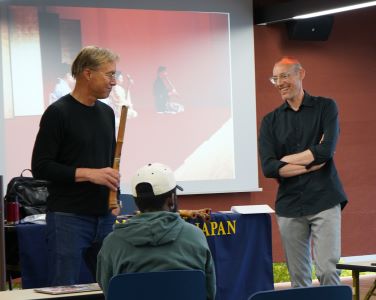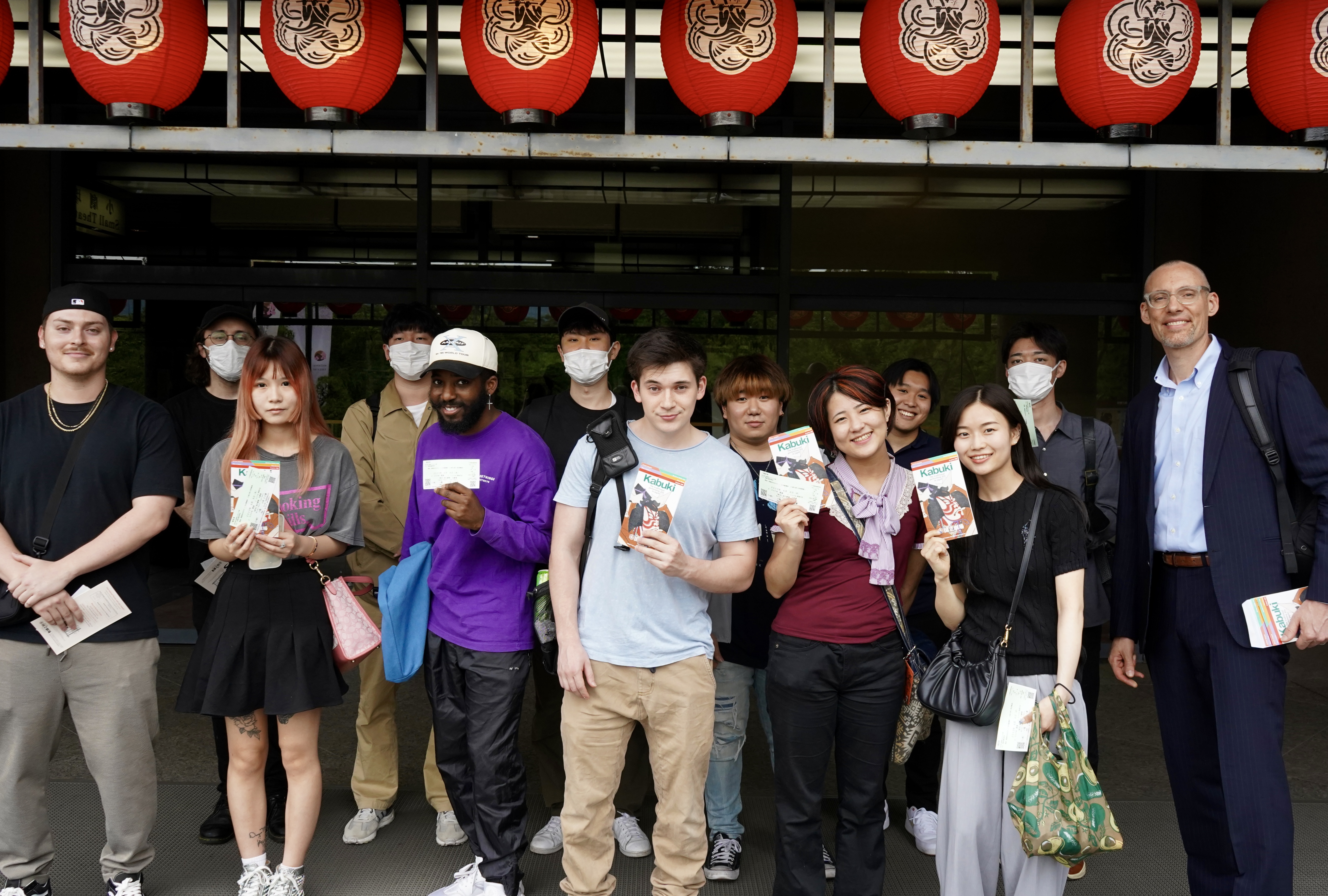LUJ Music Students Take in the Shakuhachi and Kabuki Theatre
“Time in our universe is always one way: no going back, no reverse. In music, you can reverse it!”
Ryuichi Sakamoto, 2017
When LUJ Professor Pat Glynn was building his new course, titled “The Music in Japan,” he wanted to immerse students in the sounds of traditional Japanese music, and, in a way, bring the past back to life.
On May 18, Professor Glynn invited professional shakuhachi player Bruce Huebner to perform in front of his class. The goal, as Huebner noted, was to “introduce students to the shakuhachi and the history surrounding it and…hopefully inspire someone to pick it up and play.”


On June 6, Professor Glynn led his students on a trip to The National Theatre of Japan in Chiyoda. The class sat in the auditorium and learned all about the art and music of Kabuki and its 400-year history. Students were also introduced to professional Kabuki actors, many of whom explained the choices they made during their performances and answered questions.
We asked Professor Glynn a few questions related to the musical experience here in Japan.
1) Why is it so important for the students to be exposed to 'live performance'?
Until relatively recently (the Twentieth century), all performance was 'live.' Today, we are able to consume an incredible amount of media (recorded performance) which is two-dimensional. As wonderful as that may be, it is limited and isolating. Observing or participating in a 'live performance' is in 3-D and better represents the human experience.
Attending a live performance allows the audience to be 'in the moment' with all of the people involved in its creation, bringing us closer to the performers as well as our fellow audience member. Additionally, art forms like Kabuki were created as a 'live' performing art and need to be taken-in live in order to completely observe it as it was intended.
2) What are you hoping students will end up taking from your class?
It is my hope that the students will have a better understanding of the role of music in Japanese culture and society, both historically and contemporarily. Ultimately, I want them to contemplate and appreciate how we wound up with the music we have today.
3) In what way does Kabuki represent Japanese culture?
Unlike its antecedent iterations of Japanese performing art like Gagaku and Noh Theatre, which were intended for the nobility and samurai class, Kabuki gives the modern audience a chance to observe Edo period performing art that was created for ordinary people. This makes it a true popular art form.
However, it also shares some common elements with other traditional Japanese art forms like the use of Jo-Ha-Kyū (the pace of the performance and plot development) as well as the stories and plots from historical plays from ancient and medieval Japanese literature (jidaimono). Musically, it also represents the sound of Japanese popular entertainment, prior to the Westernization of music education enacted by the Meiji government.
